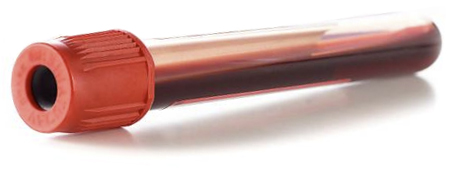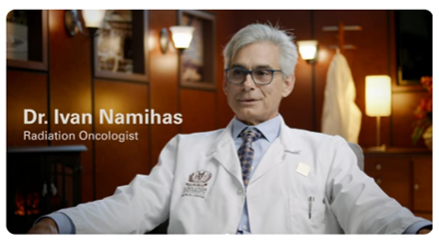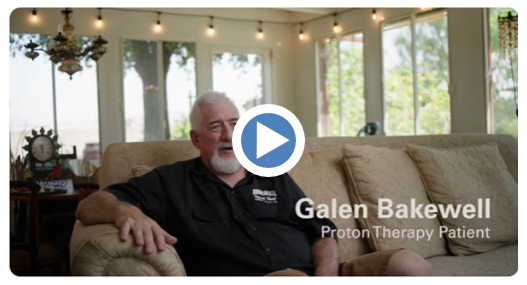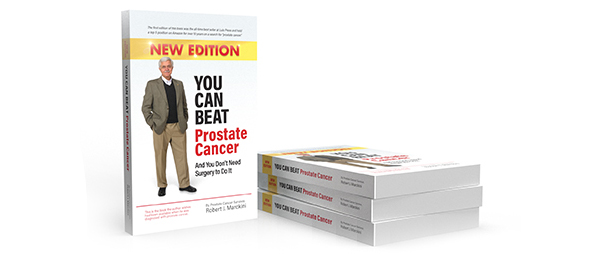

Dear Members (a note from Deb Hickey):
Graduation season reminds us how quickly time passes—and how resilient kids can be. Last month, my daughter Gemma graduated from middle school. Like many of your children, grandchildren—or even great-grandchildren—she’s stepping into a new chapter. But her path hasn’t been typical.
Gemma has dyslexia and other learning challenges, so school hasn’t always come easy. She often has to work three times as hard to keep up. She’s also not the sit-at-a-desk-and-study type. Gemma shines when she can create, move, and learn by doing—whether it’s in the kitchen cooking from a recipe she found online, cutting her hair (or a friend’s), or running around with a lacrosse stick.
I’m hopeful that the vocational technical high school we’ve chosen will give her the chance to discover what really lights her up. I don’t care if it’s culinary arts, cosmetology, or carpentry—I just want her to find her spark.
And maybe even more than that, I hope she finds her people. Friends who lift her up, laugh with her, and help carry her through the tough times.
Gemma’s story is personal, but it’s also universal. Graduation is about so much more than a diploma—it’s about resilience, reinvention, and new beginnings. Whether you’re 14 or 40 or 80, starting a new chapter takes courage. The inspiring commencement speeches we’ve shared in this month’s Final Thought remind us of that—offering wisdom not just for graduates, but for anyone standing on the edge of something new.
Here’s to the graduates in our lives—and the brave, bold paths they’ll take next.

This month’s summer double issue is packed with exciting advances in prostate cancer detection and treatment. In our opening In the News section, we start with a breakthrough genetic test using polygenic risk scores that outperforms PSA and MRI in spotting aggressive cancers early—especially for men with a family history. A new high-resolution micro-ultrasound offers a practical alternative to MRI for biopsies, making accurate diagnosis more accessible and immediate. Meanwhile, next-gen PSMA PET scans, including the promising F-18 CTT1057 tracer, are expanding imaging options and improving detection of cancers that MRI can miss.
In this issue, we’ve also written an article to help clear up any confusion about what PSMA is, what a tracer is, and how they work together. Plus, we explain the different PSMA PET tracers and their specific uses.
On the treatment side, a large study confirms that stereotactic body radiotherapy (SBRT) can effectively treat intermediate-risk prostate cancer in just five sessions, cutting down treatment time without compromising outcomes. Finally, we share new research showing that targeted proton therapy is gentler on the immune system—especially when delivered in shorter courses—offering hope for improved patient resilience during treatment.
Don’t miss our Flashback feature which revisits an important study showing that age should not be a barrier to curative prostate cancer treatment—highlighting how older men often face undertreatment despite evidence that therapies like proton beam radiation can be effective and well tolerated even in their later years.
Our Spotlight on Members section features a lifelong car and motorcycle enthusiast who caught his cancer early, chose proton therapy, and is now back to doing what he loves with a renewed outlook on life.
In the Health section, we report on alarming new research linking microplastics in the brain to dementia. We highlight six foods that may help reverse biological aging in men, reveal three everyday household items one doctor says to toss immediately, and explore the surprising impact of hydration on energy, cognition, and long-term health.
And there’s a lot more!
As always, we welcome any suggestions you have on improving the value of the BOB Tales to our members. Please send your feedback to [email protected].
Deb Hickey
📄 Prefer to print and read?
👉 Download the PDF here.

- Genetic Test Beats PSA, MRI in Early Detection of Deadly Prostate Cancer
- A Better Alternative to MRI for Prostate Cancer Biopsies
- Next-Gen PET Scan Expands Prostate Cancer Imaging Options
- PSMA PET Scans and Tracers: Clearing Up the Confusion
- Effective 5-Day Radiation
- Targeted Proton Therapy Easier on the Immune System
- New Study Links Microplastics to Dementia
- 6 Anti-Aging Foods for Men
- 3 ‘Toxic’ Household Items You Should Throw Away Immediately
- Why Staying Hydrated Matters More Than You Think
Genetic Test Beats PSA, MRI in Early Detection of Deadly Prostate Cancer
Polygenic risk scores (PRS) may significantly improve early detection of aggressive prostate cancer. A recent study showed that PRS—which analyze inherited genetic traits—can identify more than 70% of clinically significant cancers that traditional screening methods—like PSA tests and MRIs—often miss.
This study builds on research we shared last month, which illustrated how PRS can help predict cancer progression in men already diagnosed with low-risk prostate cancer. While that study focused on PRS’s potential to tailor follow-up care for men choosing active surveillance, this new research offers fresh insights into personalized early detection. By targeting men with the highest genetic risk, it suggests that PRS could catch aggressive cancers before they progress—potentially saving lives and sparing patients from unnecessary treatments.

Together, these studies highlight the expanding role of PRS in transforming prostate cancer care—from screening healthy men at risk to managing existing diagnoses more effectively. As research advances, the promise of PRS as a powerful tool in personalized medicine becomes even clearer, paving the way for more precise, tailored approaches to care.
A Better Alternative to MRI for Prostate Cancer Biopsies
In last month’s BOB Tales, we highlighted the growing role of PSMA PET/CT scans as a breakthrough tool for spotting prostate cancers that MRI-guided biopsies can miss. Now, high-resolution micro-ultrasound (microUS) is emerging as another valuable option in prostate cancer diagnosis.
While MRI remains the gold standard for guiding biopsies, it’s not always an option—especially for men with implanted devices like pacemakers, severe claustrophobia, or limited access to advanced imaging centers. Insurance hurdles can also complicate matters: Many plans require pre-approval, restrict coverage to specific criteria, or burden patients with high out-of-pocket costs. And in some regions, MRI appointments are difficult to schedule, leading to frustrating delays in diagnosis and care.
MicroUS, by contrast, can be performed in a urologist’s office in real time—without sedation, radiation, or significant wait times. Recent clinical trials suggest that microUS may match MRI in its ability to detect suspicious areas during biopsy, offering high-resolution imaging that helps physicians target areas precisely and avoid unnecessary procedures.
While PSMA PET/CT is currently the most sensitive imaging tool available, it’s expensive, less accessible, and not generally used as a first-line test. MRI is more widely adopted but not always feasible. MicroUS presents a practical, lower-cost alternative—especially in settings where access to advanced imaging is limited.
Rather than replacing more advanced tools, microUS may serve as a complementary option within the diagnostic pathway. It provides doctors with an immediate, in-office method to pinpoint areas of concern, while MRI and PSMA PET/CT remain important for more complex or ambiguous cases. Together, these imaging technologies offer a more flexible and comprehensive approach to detecting prostate cancer early and accurately.
Next-Gen PET Scan Expands Prostate Cancer Imaging Options
Building on the promising role of PSMA PET/CT in finding prostate cancers missed by MRI, a new PET radiotracer called F-18 CTT1057 has recently passed a major clinical trial, showing high accuracy and potential to broaden patient access to PSMA-targeted imaging. This adds yet another powerful tool to the growing arsenal of imaging technologies—alongside PSMA PET/CT and micro-ultrasound—helping doctors better pinpoint prostate tumors and tailor treatments more effectively.
In related research, Dr. Wayne Brisbane from UCLA is advancing the use of PSMA-targeted imaging to improve prostate cancer diagnosis. His phase I trial focused on patients who had negative MRI-guided biopsies but were later found to have clinically significant cancers through PSMA PET/CT scans. Remarkably, 41% of these patients had Grade Group 2 or higher cancers that MRI missed, often located in areas difficult for MRI to visualize. Dr. Brisbane’s study also identified an SUV max threshold of 7 as a useful marker to enhance detection, providing a valuable “second look” that could ensure fewer cancers are overlooked.
The trial for F-18 CTT1057, conducted across 17 sites in Europe and the U.S., enrolled 172 men with newly diagnosed, high-risk prostate cancer. It demonstrated excellent patient-level sensitivity—accurately identifying cancer in about 87–90% of patients—and outstanding region-level specificity, with over 97% accuracy in detecting PSMA-positive lesions compared to biopsy-confirmed pathology. Unlike earlier PET tracers that use gallium-68—a radioactive substance with a short half-life limiting its distribution—F-18 CTT1057 uses fluorine-18. This allows for easier, large-scale production and broader clinical use. Moreover, it is being developed alongside a matching treatment drug, creating a theranostic pair that combines precise imaging with targeted therapy tailored to each patient.
While PSMA PET/CT is already revolutionizing prostate cancer imaging, the addition of new, effective tracers like F-18 CTT1057, along with clinical insights from trials such as Dr. Brisbane’s, promises to increase availability and improve outcomes worldwide—especially in regions where access to existing PET agents rem ains limited. Together with MRI, micro-ultrasound, and current PSMA imaging tools, these advances are shaping a future where prostate cancer detection and treatment are more accurate, timely, and personalized than ever before.

PSMA PET Scans and Tracers: Clearing Up the Confusion
What is PSMA?
PSMA stands for prostate-specific membrane antigen—a protein found in high amounts on prostate cancer cells. PSMA PET scans use special tracers that bind to this protein, lighting up even small spots of cancer on a PET scan. These scans are more accurate than older imaging methods like CT or bone scans and are especially helpful in spotting recurrence early.
PSMA PET imaging has changed how prostate cancer is detected, especially after recurrence. But with several different types of tracers now available, it can be confusing to know the difference.
What is a Tracer?
A tracer is a tiny amount of a special chemical or medicine that’s safe to use in the body. It’s designed to attach to certain cells or proteins, like those found on cancer cells. Once injected, the tracer “lights up” these areas on a PET scan, helping doctors see where cancer might be hiding.
Which Tracers Should I Know About?
The most common tracers include Axumin (not PSMA-targeted), Ga‑68 PSMA‑11, Pylarify, and Posluma.
- Axumin was the first big step forward in PET imaging, but newer PSMA tracers are more accurate.
- Ga‑68 PSMA‑11 was the first true PSMA-targeted scan and is still widely used.
- Pylarify and Posluma both use the radioactive isotope fluorine-18 (F-18), which provides sharper images and a longer shelf life. However, the two tracers are chemically different and target PSMA in slightly different ways, offering distinct imaging benefits.
- Posluma is the newest option because very little of it ends up in the bladder. That’s important because if too much tracer gathers in the bladder, it can block the view and make it harder for doctors to see cancer near the prostate. With Posluma, the images are clearer, helping doctors detect cancer more accurately in that area.
All of these are effective tools, but some are better in certain situations. F‑18 tracers (like Pylarify and especially Posluma) provide sharper images and may be more useful for finding recurrences near the prostate. If PSMA expression is low, Axumin may still be helpful. It’s worth asking your doctor which tracer he or she is using—and why.

Effective 5-Day Radiation
A large clinical trial shows that men with early and intermediate-risk prostate cancer can receive stereotactic body radiotherapy (SBRT) in just five treatment sessions instead of the traditional 20 or more, with similar cancer control over five years. SBRT precisely targets tumors, allowing higher doses per session while sparing healthy tissue. Although men receiving SBRT experienced more short-term urinary symptoms—primarily increased frequency—these typically resolved within two years and were manageable with medication.
Although this study focused only on photon (X-ray) radiation, SBRT is also practiced using proton radiation, offering flexible treatment options depending on available technology. However, SBRT may not be appropriate for all patients—particularly those with larger prostates or pre-existing urinary issues, who may face increased side effects. And of course, men with low-risk prostate cancer may opt for active surveillance instead of radiation.
The study supports SBRT as a potential standard of care for many early and intermediate-risk patients, offering the advantages of fewer treatment visits and potentially lower costs. Yet, widespread adoption requires specialized equipment and thorough training for radiation oncologists, physicists, and radiologists. Until then, longer radiation courses continue to remain safe and effective alternatives.

Targeted Proton Therapy Easier on Immune System
A recent study showed that proton therapy can be easier on the immune system—especially when used in shorter, more targeted treatments. Researchers looked at how different proton therapy approaches affected lymphocytes, white blood cells that play a key role in the body’s immune response.
They tracked changes in lymphocyte levels in prostate cancer patients who received different types of proton therapy: a short 5-session course, a longer 21-session course, and a 21-session course that also included radiation to the pelvic lymph nodes. The goal was to see how these different methods impacted the immune system over time.
The results were striking. Only 8% of patients in the 5-session group experienced a drop in lymphocytes (a condition called lymphopenia). In contrast, 84% of patients who received radiation to their pelvic lymph nodes saw a significant drop. Even among patients who received the same number of sessions, those who had pelvic node radiation were much more likely to experience immune suppression.
Bottom line: proton therapy tends to be gentler on the immune system—especially when used in shorter, focused treatments that avoid the pelvic nodes. This is important because a stronger immune system may help patients better fight cancer during and after treatment.
We’ve been publishing BOB Tales for nearly 25 years, sharing thousands of articles—many of which our newer members haven’t seen, and longtime members may have forgotten or would appreciate revisiting. That’s why we regularly reprint articles from past issues that we believe are still relevant and carry an important message. The following article, written by Bob Marckini, appeared in our January 2011 issue.
Age: No Barrier to Prostate Cancer Treatment
A research study at UCSF, reported in the Journal of Clinical Oncology, shows that older patients are less likely to receive treatment for prostate cancer regardless of disease risk. It appears that undertreatment of older men is just as serious a problem as overtreatment of low-risk prostate cancer. “Previous studies have shown that older men are more likely to present with high-risk prostate cancer and to have lower overall survival. For that reason, they are less likely to get potentially curative treatments,” according to the study.
In the study, which involved 11,790 patients, older men were more likely than younger men to receive hormonal therapy and less likely to receive curative treatment—such as surgery or radiation—regardless of risk level. I suspect part of the reasoning behind this is the assumption that older men may not tolerate the trauma of surgery well. And with shorter life expectancy, there may be less incentive for doctors to recommend seeds, external beam radiation, or other localized treatment modalities.
However, the study points out that hormonal therapy is not without risks, which include musculoskeletal, cardiovascular, and other side effects. The authors conclude that older men with an overall life expectancy of more than 10 years should be considered candidates for surgery and radiation therapy.
I don’t entirely agree with this conclusion. The trauma of surgery is significant—I’ve seen this firsthand. Statistics show that approximately 0.5% of men (one in 200) die from radical prostatectomies, and the percentage is even higher among older men. So why subject an older man to the trauma of surgery, with its associated risks of anesthesia and infection, when there is a painless, non-invasive option available—such as proton beam radiation therapy?
We have more than 1,400 members in the BOB who were 70 or older at the time of their treatment, and more than 120 who were 80 or older. The overwhelming majority of them are doing great. Just ask 97-year-old Charlie Einsiedler, who was treated ten years ago at age 87.
So yes, I agree with the study: Age should not be a barrier to localized treatment for prostate cancer. But I would add this—proton therapy is the best choice for men, both young and old.

Back in the Driver's Seat: Caught Early, Treated Precisely
BOB member Galen Bakewell, 67, a car and motorcycle enthusiast, experienced a life-changing moment during what he thought would be a routine annual physical.
“I’m a car, motorcycle, plane, train, automobile nut,” Galen said. “If it has an engine or moves or flies or motivates, I’m interested. I was ready to move on with my life when I found out I had prostate cancer.”
A rising PSA level caught his doctor’s attention. Further testing—including a biopsy—confirmed the diagnosis: intermediate-risk prostate cancer.
Dr. Ivan Namihas, radiation oncologist at Loma Linda University Cancer Center, said Galen presented with a Gleason 4+3 prostate adenocarcinoma—an “unfavorable intermediate-risk” cancer.
High-Tech Meets High Hopes
Galen met with Dr. Namihas to explore his treatment options. “After discussing proton therapy, the decision was easy for me,” Galen said. “The lack of side effects compared to surgery was a no-brainer.”

Dr. Namihas explained what made proton therapy an ideal option for Galen. “He was most interested in the fact that it allows us to minimize the exposure of his normal tissues to any ionizing radiation. With protons, we’re able to put a very large dose of treatment right on the target—in his case, the prostate—while sparing surrounding areas like the bladder and rectum.”
The process sounds high-tech because it is. “Our synchrocyclotron peels these protons at a specific energy, shoots them down an evacuated pipe through a gantry system into the patient. We can collimate them and select the right energy so those protons penetrate precisely to the depth of the target,” said Dr. Namihas. “When they stop, they mutate the cancer cells’ DNA to prevent them from multiplying.”
Still, Galen was understandably apprehensive going in. “I went in for the first day of treatment feeling good, a little bit of apprehension,” he recalled. “Once they all left the room, it makes you think a little harder—am I doing the right thing?”
But the unease quickly faded. “After the first treatment was done, I realized it was not going to be hard to do all the rest of the treatments.”
Shifting Gears
Galen’s PSA levels remain low and stable. And with the treatment behind him, he’s focused on staying healthy and doing what he loves. “It’s made me more aware of my vulnerability. Consequently, I want to do things that will make me healthier to continue living a longer, better life.”
He also speaks highly of his care team. “It’s interesting to have gotten a disease I didn’t know I had, to get a treatment I can’t feel, and walk away feeling nothing—but knowing that I’m in better shape than I was when I went in. It’s a win-win situation.”
Dr. Namihas echoed Galen’s positive experience. “I think we’re very patient-oriented, especially in the proton facility. Almost always the patients leave with a sense that, ‘You took care of us. You had the right attitude.’ Everyone involved makes it so easy for them to do this.”
Now, Galen is back to doing what he loves—working on his 1930 Ford Model A and riding his motorcycle (more than he has in years).
Perhaps most importantly, he wants to encourage other men not to wait. “Don’t be afraid to get your PSA checked. Be a man and go in there and get it taken care of.”
Watch a video of Galen’s story.


Groundbreaking Treatments for Blood Cancers, Blood Disorders
For nearly 25 years, the BOB Tales newsletter has been a trusted resource for members who have had—or are considering—proton therapy for prostate cancer, whether at Loma Linda University Cancer Center or at one of the 46 proton centers now operating across the U.S. (and many more abroad). Much of this growth traces back to the vision of the late Dr. James M. Slater—a true pioneer in the field—who championed and oversaw the creation of the world’s first hospital-based proton treatment center at Loma Linda University Health in 1990.
Motivated by a desire to improve quality of life for cancer patients and minimize the side effects of conventional radiation, Dr. Slater helped bring proton therapy into a clinical setting where it could benefit more people. He also contributed to research on radiation sensitizers and radioprotectors, advancing the science behind this powerful treatment.

Building on that legacy of innovation, LLUH is now transforming care for patients with complex blood cancers like leukemia, lymphoma, and multiple myeloma—and serious blood disorders such as sickle cell disease and thalassemia. Through a new wave of advanced, highly targeted therapies—including cellular and genetic treatments—LLUH is tackling some of the most challenging conditions in medicine with precision and compassion.
To give you a clear understanding of how these life-saving technologies work, LLUH recently released an animated video that simplifies exactly how these extraordinary therapies work—and we think it’s a must-watch for anyone curious about how far treatment has come. You’ll discover how:
- Bone Marrow Transplants collect stem cells, treat cancer-infected marrow, and reintroduce healthy cells to rebuild the immune system.
- CAR-T Therapy genetically modifies a patient’s own T cells to recognize and attack stubborn cancer cells—offering new options when other treatments have failed.
- Gene Therapy replaces defective genes with healthy ones to treat life-threatening blood disorders—providing long-lasting relief and dramatically improved quality of life.
This is science at its most compassionate: personal, precise, and powerful. And it’s all made possible because people like you support this mission. Our members have stepped up in remarkable ways over the years—a recent gift even reached $1 million. But no matter the amount, every contribution helps save lives. Together, we’re not just supporting a hospital—we’re helping reshape the future of cancer care.
Watch the animated video that clearly shows how cutting-edge therapies work to treat blood cancers and inherited blood conditions—up close and in detail.
Giving Options
- Online: Donate here. From the pull-down menu, choose where you’d like to direct your gift — 1) Cancer Center Vision; 2) Proton Research through the James M. Slater Chair; 3) Proton Research through the Robert J. Marckini Chair; or 4) Other (specify any area you’d like your gift directed in the space provided)
- By Check: Make your check out to “LLUCC.” Specify where you’d like to direct your gift in the memo line — 1) Cancer Center Vision, 2) Slater Chair, 3) Marckini Chair, or 4) write “unrestricted” so LLUH can use it where it’s needed most. Mail your check to: LLUH, Office of Philanthropy P.O. Box 2000, Loma Linda, CA 92354.
- By Phone: Call Regina Joseph at 909-558-5010.

New Study Links Microplastics to Dementia
Microplastics are tiny plastic particles found in the food we eat, the water we drink, and even the air we breathe. A recent study also found these particles in human brain tissue collected after death. Even more alarming: the amount of plastic in some brains has nearly doubled since 2016—and in extreme cases, researchers found the equivalent of a teaspoon of plastic by weight.
The study also revealed that people with dementia had up to 10 times more microplastics in their brains than those without. While this doesn’t prove that plastic causes dementia, it raises serious questions about whether plastic exposure might play a role in brain decline—or if damaged brains simply hold onto these particles more easily.
Some of the plastics were small enough to cross the blood-brain barrier—a protective shield that normally blocks harmful substances from entering the brain. The fact that these particles were found in brain tissue suggests they can breach this critical defense.

Microplastics have already been linked to inflammation, heart disease, neurological issues, and reproductive problems. Reducing your exposure doesn’t require a complete lifestyle overhaul, but small changes can help:
- Avoid heating food in plastic containers
- Store food in glass or stainless steel
- Use fewer single-use plastics
As toxicologist Dr. Kelly Johnson-Arbor notes, cutting back on plastics benefits both the environment and your health.
The discovery of microplastics in the brain is a disturbing development. While more research is needed, this is a wake-up call to rethink how we use plastic in our daily lives.

6 Anti-Aging Foods for Men
A new study suggests that certain foods may help slow—or even reverse—the body’s aging process, particularly in middle-aged men. Researchers found that incorporating specific plant-based ingredients into the daily diet can reduce a person’s epigenetic age—a marker of how quickly the body is aging on a cellular level.

Unlike chronological age (the number of birthdays you’ve celebrated), epigenetic age is based on chemical markers on your DNA that can be influenced by diet, lifestyle, stress, and environment. These changes, called DNA methylation patterns, can indicate whether your body is aging faster or slower than expected. Scientists believe that a lower epigenetic age could mean better long-term health and lower risk of age-related diseases.
In the study, men between the ages of 50 and 72 were divided into two groups. One group made targeted dietary and lifestyle changes, including daily consumption of specific foods known as “methyl adaptogens”—natural compounds thought to support healthy gene expression. The other group continued with their usual eating habits. After eight weeks, the men who followed the intervention plan saw an average reduction of nearly half a year in their epigenetic age. And those whose bodies were aging faster than their actual age showed the most dramatic improvements.
So, what was on the plate of the test group? The foods linked to epigenetic age reversal included:
| 1. Turmeric | 4. Rosemary |
| 2. Green tea | 5. Garlic |
| 3. Oolong tea | 6. Berries |
The men also ate liver, eggs, lean meats, and plenty of vegetables, seeds, and healthy oils—while avoiding grains, legumes, dairy, and alcohol.
Interestingly, the benefits weren’t linked to weight loss, but to the types of foods eaten—suggesting that certain ingredients may help the body age more slowly from the inside out. While more research is needed, adding polyphenol-rich, plant-based foods to your plate could be a simple step toward healthier aging.

3 'Toxic' Household Items You Should Throw Away Immediately
Dr. Saurabh Sethi, a gastroenterologist and hepatologist, has identified three household items he calls toxic and urges people to discard them right away for health reasons.
- Scented Candles: These often contain phthalates—chemicals known to disrupt hormones and cause breathing problems. Instead, choose unscented or natural candles made from soy or beeswax to avoid these risks.
- Plastic Cutting Boards: Over time, plastic boards can break down and release tiny microplastics into your food. These microplastics may build up in the body and carry harmful chemicals. Switching to wooden cutting boards is a safer option.
- Scratched or Damaged Non-Stick Pans: Non-stick cookware contains PFAS (“forever chemicals”) linked to high blood pressure, cholesterol issues, reproductive problems, and even some cancers. Damaged pans can leak these substances into your food. Dr. Sethi advises replacing scratched pans or opting for safer alternatives like stainless steel or cast iron.
Why These Chemicals Are Dangerous
- Phthalates interfere with hormones and can cause reproductive problems, early puberty, and even cancer risks. They’re found in plastics, scented products, and more.
- Microplastics carry harmful toxins and can disrupt hormones, brain development, and immune function.
- PFAS are persistent chemicals used to make products water- and stain-resistant. They’ve been linked to thyroid issues, cancer, fertility problems, immune system weakening, and developmental issues in children.
Safer Alternatives
Instead of scented candles, choose unscented candles or those made from natural materials like soy wax or beeswax, which don’t contain harmful phthalates. Switch to wooden cutting boards; they don’t release microplastics and are generally more durable and safer for food prep. Replace scratched or damaged non-stick pans with stainless steel or cast-iron cookware, both of which are durable, safe, and don’t leach harmful chemicals.

Why Staying Hydrated Matters More Than You Think
Most of us know we should be drinking more water—but too often, we grab a soda or flavored drink instead of plain old H2O. Since our bodies are made up of around 50% water and we lose fluids every day just by breathing and sweating, staying hydrated is essential for our health.

According to Dr. Jonathan Webster, even mild dehydration can take a serious toll on the body—causing headaches, fatigue, brain fog, constipation, and even urinary tract infections (UTIs). To help prevent these issues, most health experts recommend that adults drink about 6 to 8 cups (48 to 64 ounces) of fluids per day. While plain water is the best choice, you can also stay hydrated with drinks like coffee, tea, and milk, plus water-rich foods such as melons, soups, and stews.
Keep in mind, your ideal fluid intake depends on your age, gender, and activity level. Dr. Webster offers a helpful breakdown of how much you really need to stay energized and well throughout each stage of life.
- Children need less than adults but still require consistent hydration—especially when active. For example, kids ages 4–8 need around 5 cups (40 oz) of fluids per day.
- Teenagers and adults typically need more. Teen boys and adult men should aim for about 13 cups (104 oz) daily, while teen girls and adult women need around 9 cups (72 oz).
- Older adults should be especially mindful. As we age, our sense of thirst weakens, making it easier to become dehydrated without noticing. Drinking small amounts throughout the day can help prevent issues like fatigue, dizziness, and confusion.
A few extra sips each day could mean more energy, fewer headaches, and better focus. Prioritize hydration—it’s one of the easiest ways to take care of your body at every age.

You Can Beat Prostate Cancer: And You Don't Need Surgery to Do It - Second Edition

No. 2 on Amazon!
As of this writing, Bob’s second edition is holding the No. 2 spot on Amazon out of more than 7,000 books on prostate cancer. With a combined 818 reviews across both editions and an average rating of five stars, it’s clear the book continues to educate, empower, and inspire men on their prostate cancer journeys. Its consistent high ranking reinforces what so many readers already know: this is a trusted, go-to resource for men navigating prostate cancer decisions.
Real Words from Real Readers
Bob’s book continues to resonate with men and families navigating prostate cancer. The thoughtful, heartfelt feedback keeps coming in. Here’s a recent review by “Jimmy D.”
![]()
How Refreshing
This book is a very useful tool if/or when you are diagnosed with prostate cancer. It’s very informative. It includes information about all the current treatment options at time of press (five years ago). I stumbled across it doing my due diligence. Thanks to Amazon it was a free Kindle choice. It has definitely opened my eyes. Go ahead and read it, you won't be sorry.

Have You Heard Bob's Story in His Own Voice?
We’ve mentioned it before, but it’s worth repeating: There’s an audio version of Bob’s book. If you’ve read the book, you already know how valuable it is. But hearing Bob tell his story out loud—in his own voice—adds an entirely different layer.
Why It Hits Differently
Deb encouraged Bob to narrate the audiobook himself. “People need to hear it from you,” she said. “You’ve lived it.” And she was right—many listeners have told us that hearing Bob share his story made all the difference. “It’s the calming authenticity in his voice,” Deb said.
One member shared that he’d already read the book twice, but listening to the audio version helped it all click. Another said it felt like he had a guide walking him through one of the most overwhelming times of his life: “It made me feel less alone,” he wrote.
So if you haven’t listened yet—or didn’t even know it existed—it’s worth checking out. Whether you’re newly diagnosed, already treated, or supporting someone else, hearing Bob tell his story in his own voice can be a steady, reassuring presence during a difficult time.

Did Bob’s book help you? Your review matters.
When diagnosed with cancer, many immediately search for answers. A Healthline survey found 89% go online—40% on the very same day. Many land on Amazon, which gets over 3 billion visits monthly and often ranks high in search results.
That’s why reviews matter. Research shows 91% of consumers read them, and 84% trust them like personal recommendations—especially for big decisions like cancer treatment.
If Bob’s book helped you, please take a moment to write a review. Your voice might guide someone else toward hope and clarity. Thank you.

Last Month's Brain Teaser
What can be swallowed but can also swallow you?
Answer: pride
Winner: Winner: Congratulations to Dr. James Koenig, DDS, of Forest Lake, MN—winner of our June 2025 Brain Teaser! Jim was treated with proton therapy for his prostate cancer in 2008 at the Midwest Proton Radiotherapy Institute (later known as the Indiana University Health Proton Therapy Center) in Bloomington, IN. The facility has since closed.
Other answers we received (and they all work!) include water, fog and the truth. Our members are very clever!
New Brain Teaser
What can travel around the world while staying in the same spot?
Send your answer to [email protected] for a chance to win a signed copy of Bob Marckini’s second edition book, You Can Beat Prostate Cancer.
The Last Good Deed
A man died and arrived at heaven’s gates. St. Peter greeted him and said, “Before you meet God, we reviewed your life. Honestly, you didn’t do anything especially good or bad. Can you tell us something you did that might help?”
The man thought for a moment and said, “Well, recently I was driving and saw a little old lady being harassed by a group of thugs. So I pulled over and confronted their leader—a big, muscular guy with a lip ring. I told him if he and his gang didn’t leave the lady alone, they’d have to answer to me.”
St. Peter raised his eyebrows. “That’s impressive. When did this happen?”
“About three minutes ago,” the man replied.
Questionable Humor
- An old lady is sitting at a bar when an even older gentleman sits down beside her. “So,” he says, “Do I come here often?”
- Genie: Master, you have three wishes. Use them wisely.
Man: Brilliant! For my first wish, I want to be rich!
Genie: Ok, Rich. What’s your second wish? - My friend thinks he’s smart. He told me an onion is the only food that makes you cry, so I threw a coconut at his face.
- What is the difference between a hippo and a Zippo? One is very heavy, the other is a little lighter.
Golf Quotes
“When I die, bury me on the golf course, so my husband will visit.” — Unknown
“I’ve spent most of my life golfing. The rest I’ve just wasted.” — Unknown
“Golf is a game in which you yell ‘fore,’ shoot six, and write down five.” — Paul Harvey
“The only time my prayers are never answered is on the golf course.” — Billy Graham
“Reverse every natural instinct and do the opposite of what you are inclined to do, and you will probably come very close to having a perfect golf swing.” — Ben Hogan
“The difference in golf and government is that in golf you can’t improve your lie.”
— George Deukmejian
“Golf is a game invented by the same people who think music comes out of bagpipes.”
— Unknown
“If you’re caught on a golf course during a storm and are afraid of lightning, hold up a 1‑iron. Not even God can hit a 1‑iron.” — Lee Trevino
The Top 10 U.S. Cities to Retire in 2025—Ranked by U.S. News
U.S. News & World Report crunched the data—considering cost of living, health care, happiness, taxes, and more—to name the top U.S. cities for retirees in 2025. Naples, FL came in first, thanks to its excellent medical facilities, year-round sunshine, beach access, and retiree-friendly lifestyle (despite a higher cost of living). Here’s who else made the top 10—and why:
- Naples, FL: Great health care, beaches, and sunshine. Expensive, but many say it’s worth it.
- Virginia Beach, VA: Coastal beauty plus a reasonable cost of living and Social Security tax exemption.
- New York, NY: Pricey but rich in culture, top-tier hospitals, and public transportation.
- Sarasota, FL: Warm weather, beaches, and a strong arts scene focused on seniors.
- Boise, ID: Affordable, active lifestyle, and expanding health-care options.
- Raleigh, NC: Affordable, great hospitals, and plenty of intellectual and cultural stimulation.
- Jacksonville, FL: Low housing costs and a beachy, outdoorsy lifestyle.
- Huntsville, AL: Low cost, high-quality care, and a strong sense of community.
- Charlotte, NC: Urban perks, mild climate, and accessible care—without the big-city costs.
- Fort Wayne, IN: – Low cost of living, good parks, and a slower pace of life.
Beware of the “Hi Mum” Scam
We’ve written before about AI voice scams targeting unsuspecting victims, but a new variation known as the “Hi Mum” scam is making headlines—especially overseas. In this version, fraudsters use advanced AI technology to clone the voices of children or loved ones, making phone calls that sound eerily real. The scammer often claims to have lost
their phone and urgently needs money, pushing for immediate payment. This tactic preys on emotional bonds and uses convincing voice mimicry to bypass usual skepticism, leading many victims to lose significant amounts before realizing the truth.
Experts recommend setting up a unique, secret “safe word” with family members to verify identity during financial emergencies. Always pause and verify any unexpected money requests—especially those that come with urgency or secrecy.
Read more about the “Hi Mum” scam and how AI voice cloning is being used and learn how to protect yourself at Action Fraud and Take Five to Stop Fraud.
10 Strange Facts from Around the World
- In Egypt, it is considered rude to ask for salt during a meal because it implies that the food isn’t well seasoned.
- Japan has over 5.5 million vending machines offering everything from hot meals and coffee to umbrellas and collectibles.
- Despite its damp climate, Iceland has virtually no mosquitoes. The erratic daily temperature swings disrupt mosquito breeding cycles.
- In South Korea, writing someone’s name in red ink is considered deeply offensive, as red is traditionally used to mark the names of the deceased—doing so is thought to bring bad luck or even signal death.
- The Goliath “birdeater” tarantula found in the Amazon has a 12-inch leg span and can weigh as much as a small puppy—though it’s harmless to humans.
- The official animal of Scotland is the unicorn.
- In New York, there are more Italian Americans than in Rome, more Irish Americans than in Dublin and more Jews than in Tel Aviv.
- Denmark is the cleanest country in the world.
- In Bulgaria, nodding means “no” and shaking your head means “yes”.
- The Bahamas once had an undersea post office.


Inspiration from the Class of 2025
As many of our members celebrated the milestones of children, grandchildren, or even great-grandchildren graduating last month—whether from middle school, high school, college, or beyond—we’re reminded that the journey of growth and discovery never truly ends.
Many “Class of 2025” U.S. college commencement speakers offered powerful messages that resonate far beyond the stage. Their words—along with timeless wisdom from past voices—remind us all to keep striving, learning, and embracing what lies ahead.
The late Steve Jobs once famously urged graduates to “stay hungry, stay foolish,” encouraging us to follow our passions and remain curious, even when the path forward isn’t clear. Though this message is from a previous generation, it remains as relevant today as ever.
Last month, actress Jennifer Coolidge, speaking at Emerson College, inspired the Class of 2025 to embrace the unknown and take risks—stepping bravely outside their comfort zones, where growth happens.
Actress Kerry Washington, delivering the address at Benedict College, reminded us that each of us is the hero of our own story, tasked with creating a life of purpose and courage.
Science communicator, YouTuber, and entrepreneur Hank Green, speaking at the University of Montana, highlighted the power of curiosity, urging us to never stop asking questions or seeking knowledge.
And Olympian Simone Biles, at the University of Houston, showed us the strength found in resilience and reinvention—rising and adapting through life’s challenges.
These voices, from diverse backgrounds and moments in time, share a timeless truth: life is a journey to be lived boldly, with hope and passion.
So, whether you’re cheering on a new graduate or navigating your own next chapter, remember to stay curious, take chances, be resilient, and hold onto what gives your life meaning.
Here’s to every generation—and to the bright futures ahead.
Low PSAs to all,
Bob Marckini and Deb Hickey
Want a printable version of this issue?
👉 Download the PDF here.
NO MEDICAL ADVICE: Material appearing here represents opinions offered by non-medically trained laypersons. Comments shown here should NEVER be interpreted as specific medical advice and must be used only as background information when consulting with a qualified medical professional.



